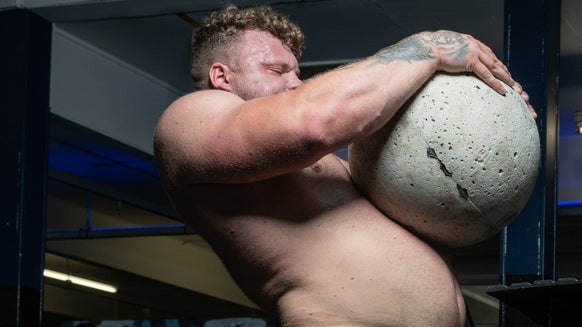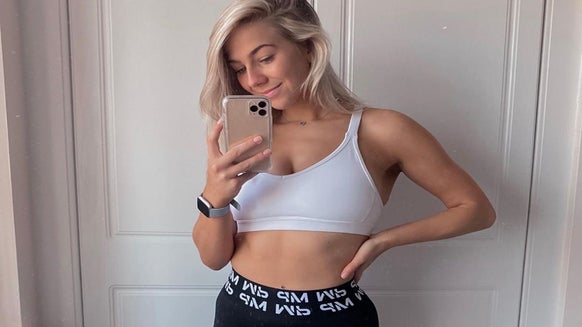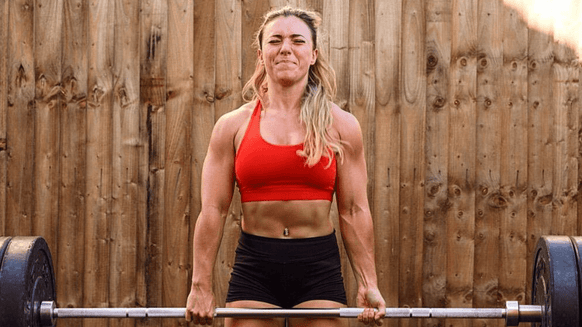 In this guide, we will take you through some of the most effective supersets, so you can make the most of your time in the gym. It's not just about working hard but working smart.Supersets are a fantastic way of training if you’re short on time or have limited equipment. They’re a great way to finish off a muscle group at the end of your gym session. Or, if you’re doing a full-body workout, you can try 1‐2 supersets for chest, back, shoulders, and arms, for a complete upper body workout.
In this guide, we will take you through some of the most effective supersets, so you can make the most of your time in the gym. It's not just about working hard but working smart.Supersets are a fantastic way of training if you’re short on time or have limited equipment. They’re a great way to finish off a muscle group at the end of your gym session. Or, if you’re doing a full-body workout, you can try 1‐2 supersets for chest, back, shoulders, and arms, for a complete upper body workout. Example supersets
A standard superset would go something like this:
1. Set yourself up on a bench ready for a shoulder press, with a set of heavier dumbbells, and a set of lighter ones at your feet.
2. Perform your required reps with the heavier dumbbells.
3. As soon as you have finished your heavier set, put the dumbbells down, and grab the lighter ones.4. With only around 5‐10 seconds rest, repeat the same movement with the lighter dumbbells.https://youtu.be/UXy79ivGwXY
This technique allows you to force out extra reps for the muscle group you're trying to target.
Common mistakes
The most common error, with this type of superset, is not having the second set of dumbbells light enough. Using dumbbells similar in weight will not allow you to properly perform the second set to the maximum. Your form will be sloppy and you may only get 3‐4 extra reps out, we are looking to get 7‐10 extra reps out if possible.
But this isn’t the only kind of superset you can try out. Here’s a few more to try:
Compound into isolation superset
This kind of superset requires a second, different exercise to be performed. Sometimes, when you do a set of shoulder press, your triceps give in before your shoulders, if that’s the case, try this kind of superset.1. Set up your bench to perform a dumbbell shoulder press, and have a set of dumbbells ready at your feet to do a lateral raise immediately after.2. Perform the shoulder press, and then put down the weights.3. Immediately grab the lighter dumbbells and perform 12‐15 lateral raises.
https://youtu.be/2kLrHfLmUAA
Because your triceps are no longer involved when you perform the lateral raise, your delts are taking over, and they’ve just been used in the shoulder press. This will push your delts to their limits.
Common mistakes
Using momentum is a big no. With the example above, the most common mistake is because the shoulders are burning, you start to use your hips to swing your arms up. This will only reduce the amount of work your shoulders are actually doing. When you feel yourself starting to lean back, stop, and get ready for the second superset.The biggest mistake with this type of exercise is using a compound exercise that shouldn't superset, like squats, deadlifts, and bench press.
Reps to failure superset
This type of superset is best used at the end of a workout, as training to failure shouldn’t be done at the start of the workout. Think of this as a finishing superset.Let’s take the upright row into rear delt fly as an example.1. Grab a barbell weight that is challenging for a set of upright rows and some light dumbbells with which you can perform 10+ reps on a rear delt fly/reverse pec deck machine.
2. Perform the upright row with the required amount of reps, then put the barbell down and sit straight down onto the rear delt fly/reverse pec deck machine.
3. Perform as many reps as you can, until you cannot complete one more rep. I recommend the reverse pec dec for this one. The chest pad helps you to maintain good form.
https://youtu.be/xg0qajoXEac
Common mistakes
A common mistake is using momentum to move the weight rather than the muscles you're trying to target. Swinging your body only reduces the weight and makes the exercise less effective.
Controlling the weight and activate your delts (deltoids). If you find yourself struggling to complete the sets without using momentum, try using a lower weight.
You're also less likely to injure yourself this way.
Supersets for a whole body workout
Full-body workouts can be really intense. So, pairing up antagonistic (opposite) muscle groups can be a great way to cut down your time in the gym.
For example, you may pair up a dumbbell shoulder press with lat pulldowns, or a dumbbell chest press with a bent-over row. Here’s an example of a shoulder-based superset...1. Set up a barbell with a weight you can perform 10 reps with on an overhead barbell press.
2. Perform your 10 reps of and bring the weight down to the ground. Add extra weight for your bent-over row if needed.3. Bend over, re‐grip the bar, and stand up. Perform 10 reps of a bent-over row.4. Once completed, remove the extra weight if needed, replace the bar on the rack, and rest until you’re ready for the second set.
https://youtu.be/l1hZkB37X_8
This is a great way to pair opposing muscle groups together, making a whole body workout much quicker and more efficient.
Common mistakes
A common mistake here is pairing two exercises together that target similar muscle groups. A bent-over row targets the lats and the rhomboids, with the lats being the antagonistic muscle to the shoulders/delts.Performing a rowing movement (bent-over row) and pairing it with a pull-up or back fly would not be antagonistic, as both exercises target the same muscle groups. Take-home message
Supersets are an effective way to add more to your workouts. Whether that's an increase in workload, the intensity of the workout, or even cutting down your gym time there are so many benefits.It's important to remember that during any superset, whether it be a failure superset or compound into isolation drop set, to make sure your form is good throughout the whole exercise. Ensure each rep is targeting the muscle group you are trying to hit, and that you aren’t cheating the reps, or yourself.
Alice Pearson is a UKVRN Registered Associate Nutritionist and UK Anti‐Doping accredited advisor, having obtained a Bachelor’s of Science in Nutrition and a Master’s of Science in Sport Nutrition. She has a specialist interest in the use of sports supplements for improving health, fitness, and sport performance.
Alice has experience working with both amateur and elite athletes, including providing nutritional support to Tranmere Rovers FC and Newcastle Falcons Rugby Club. Her nutritional guidance is always supported by evidence‐based research, which she keeps up to date through continuing professional development and independent learning.
In her spare time, Alice loves travelling, hitting the gym, and getting stuck into a good book. Find out more about Alice's story here.








